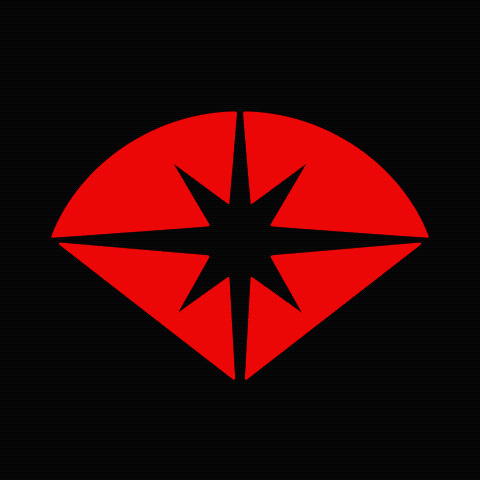Chapter 6: Mastering Line Work - The Foundation of Tattoo Artistry
Introduction:
As an emerging tattoo artist, perfecting line work is your initial, yet most challenging, rite of passage. Mastery in this skill sets the groundwork for all your future tattoo endeavors.
In This Chapter, We Explore:
⦁ Optimal Tattoo Machine Handling: Learn the nuances of holding your tattoo machine to enhance control and precision.
⦁ The 3 Points of Contact Technique: Understand the importance of stability and how three points of contact ensure unwavering accuracy.
⦁ Skin Stretching Essentials: Delve into techniques for skin stretching, a critical factor in achieving clean and crisp lines.
⦁ The Art of Angling: Discover the significance of the tattoo needle's angle, a subtle yet crucial aspect affecting the quality of line work.
⦁ Depth Mastery: Uncover the secrets to determining the optimal depth for the tattoo needle, ensuring lines that are neither too superficial nor too deep.
⦁ Voltage Fine-Tuning: Grasp the importance of adjusting your tattoo machine's voltage for line work precision, catering to different skin types and design intricacies.
=========================================================================
Line Work Mastery
1. Holding Your Tattoo Machine: The Foundation of Precision
Stability is key while lining, necessitating a firm grip on the tattoo machine.
Basic grip technique:
⦁ Rest the cartridge on your middle finger.
⦁ Thumb wraps around the cartridge side.
⦁ Index finger lies atop the cartridge.
⦁ Ring and pinky fingers anchor your hand against the skin.
Note: Individual preferences may lead to variations in grip style.
2. The Triad of Stability: 3 Points of Contact
Achieve machine steadiness akin to a tripod's balance.
Establishing stability:
⦁ Pinkie finger of the tattooing hand meets the thumb of the stretching hand.
⦁ Elbow locks against ribs or massage table.
⦁ Wrist plants against the table or tattoo chair.
⦁ Ensure a majority of movement originates from the elbow, not the hand, preventing line wobbles.
3. The Art of Skin Stretching
⦁ Essential for solid, straight lines.
⦁ Stretch direction should align with the line's direction to avoid waviness.
4. Perfecting the Angle
⦁ Smaller needle groupings: ~65°.
⦁ Larger needle groupings: closer to 90°, ensuring all sharps penetrate the skin.
⦁ The machine's trajectory should point toward the line's direction, preventing ink blowouts.
5. Depth Precision: Striking the Dermis
Understanding skin layers is crucial:
⦁ Epidermis: superficial layer.
⦁ Dermis: target layer, approximately 2mm deep.
⦁ Hypodermis: avoid, to prevent ink blowouts.
Correct depth feels recognizable through vibrations in the stretching hand.
6. Needle Depth Techniques:
⦁ "Ride the Tube": Full tube contact with skin, preventing excessive depth but potentially obscuring vision and increasing pain.
⦁ "Hover the Needle": Requires manual depth control, offering better visibility but risking blowouts.
7. Voltage Synchronization: Hand Speed Meets Machine Speed
⦁ Needle movement creates dots, not continuous lines.
⦁ Hand speed must match machine speed to avoid scarring or stippling.
⦁ Adjust voltage based on your comfortable hand movement speed.
Recognizing line quality:
⦁ Even, steady line: Ideal balance.
⦁ Patchy line: Adjust by slowing hand or increasing machine speed.
⦁ Shaky, blown-out line: Correct with faster hand movement or reduced machine speed.
Understanding Voltage Variations
Needle Size and Voltage: A Direct Relationship
The principle: Thicker needles penetrate larger skin areas, necessitating more power.
No "universal" power setting exists due to variations in machines and skin types.
Voltage Guidelines: Starting Power Points for Different Needles
These are not strict rules but starting points, adjustable based on individual needs and machine specifications.
3 Round Liner: 6-7 volts
9 Round Liner: 8-9 volts
18 Round Liner: 10-11 volts
Note: These estimates are based on specific machines and artist techniques. Adjustments may vary.
The Artist's Touch: Personal Technique and Voltage
⦁ Every artist's handspeed and technique influence the ideal voltage.
⦁ Voltage needs can differ significantly between artists due to these unique factors.
Hand Speed: The Voltage Determinant
Your hand movement speed directly impacts the suitable voltage.
Faster handspeed might require higher voltage, but it's crucial to find a balance.
5. Safety First: Voltage Limits
⦁ To prevent excessive skin trauma, never exceed 11 volts.
⦁ Higher voltages can cause unnecessary damage and pain, compromising the tattoo's quality and healing process.
Remember: These guidelines serve as a foundation. Continuous practice, experience, and learning from each tattoo session will refine your understanding of the perfect voltage for each situation. Always prioritize skin integrity and client comfort.
